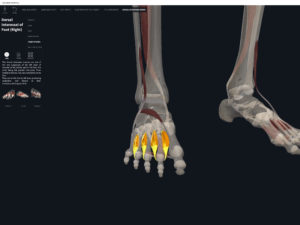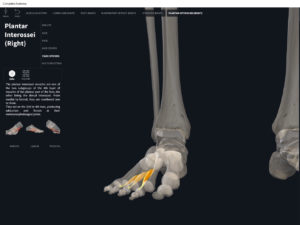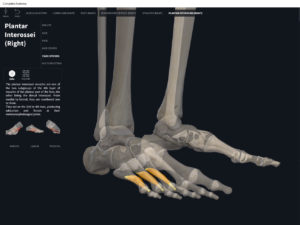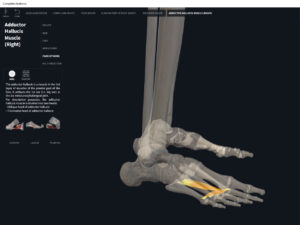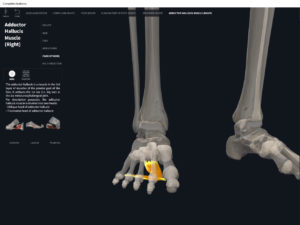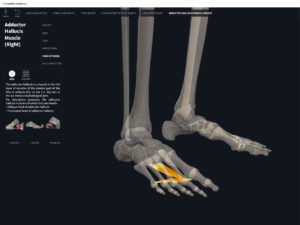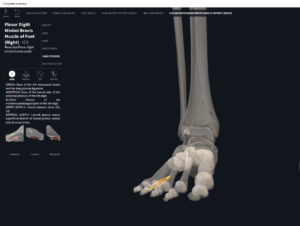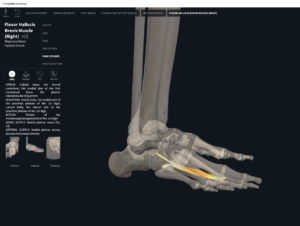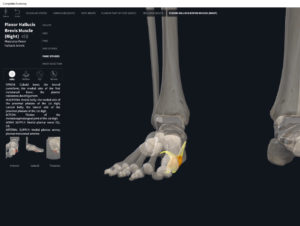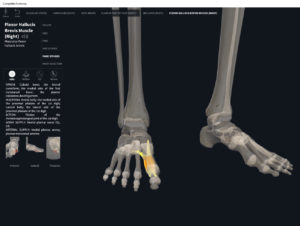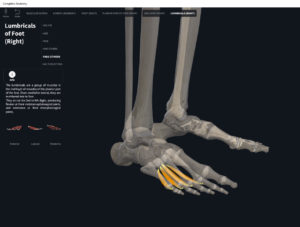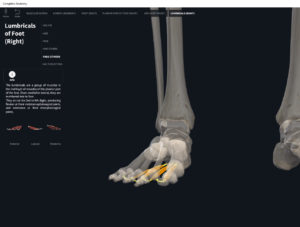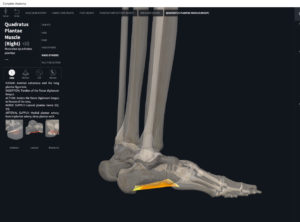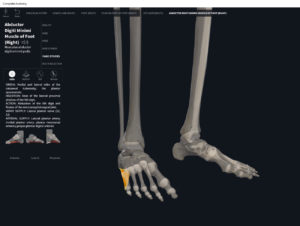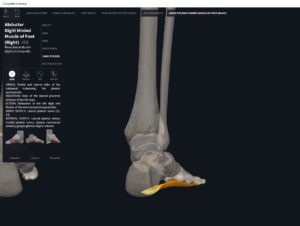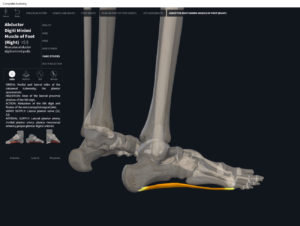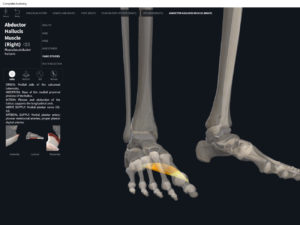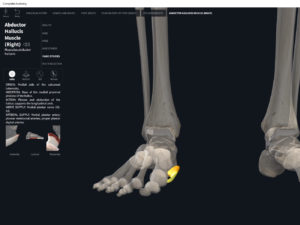Anatomy & Physiology: Muscles—Dorsal Interossei Pedis.
Structure.
- Origin: adjacent side of metatarsals.
- Insertion: proximal phalanges (both sides of toe II and lateral side of toes 3-4).
Function.
- Concentric action: adduction and flexion of proximal metatarsophalangeal joints; extension of toes at interphalangeal joints.
- Reverse mover action: abduction of metatarsals of toes 2-4 at MTP; flexion of metatarsals at MTP; extension of proximal phalanges at PIP and DIP.
- Eccentric action: controls/restrains/decelerates adduction of MTP of toes 2-4; extension of MTP of toes 2-4; flexion of PIP and DIP of toes 2-4.
- Isometric action: stabilize MTP, DIP, PIP.
- Innervation: lateral plantar nerve.
- Arterial supply: branches of plantar arch.
Clinical Significance.
More.
- https://www.anatomynext.com/dorsal-interossei-of-foot/
- https://stuart-hinds.com/blogs/performance-therapy/using-cupping-to-treat-the-deep-muscles-of-the-foot
References
Biel, A. (2015). Trail guide to the body: A hands-on guide to locating muscles, bones and more.
Clark, M., Lucett, S., Sutton, B. G., & National Academy of Sports Medicine. (2014). NASM essentials of corrective exercise training. Burlington, MA: Jones & Bartlett Learning.
Jenkins, G., & Tortora, G. J. (2012). Anatomy and Physiology: From Science to Life, 3rd Edition International Stu. John Wiley & Sons.
Muscolino, J. E. (2017). The muscular system manual: The skeletal muscles of the human body.
